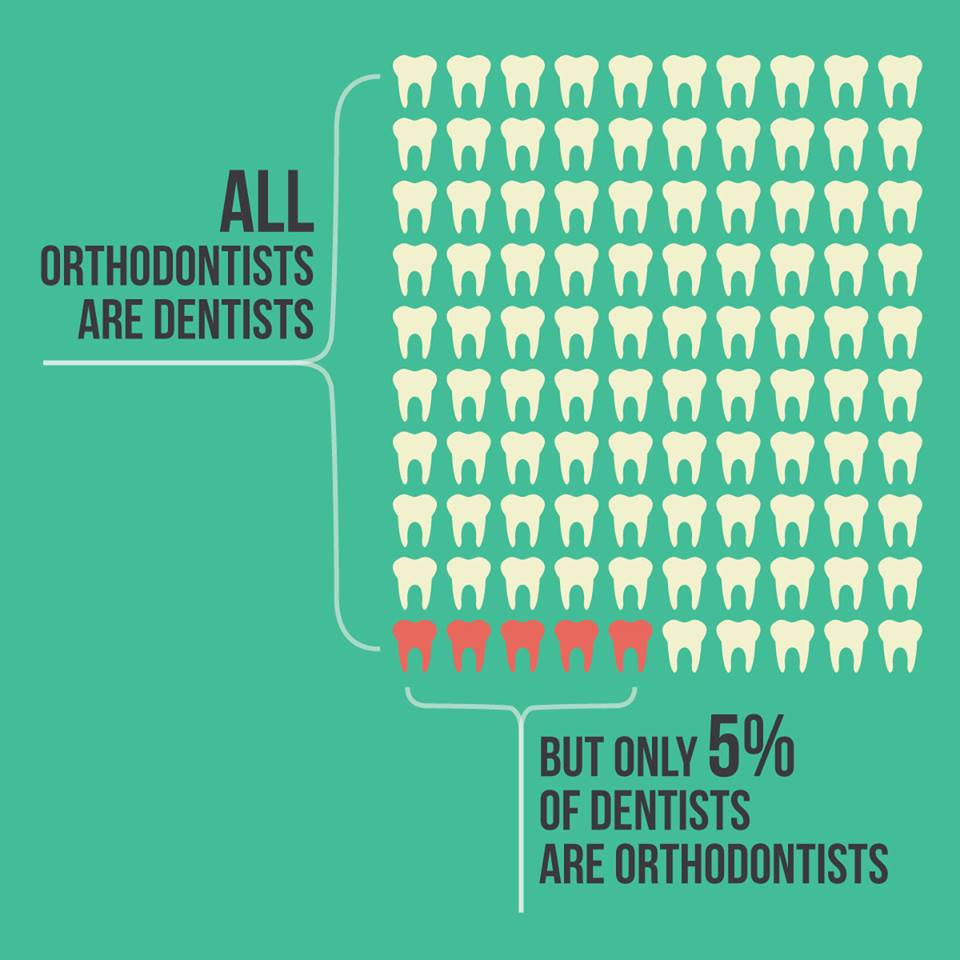Your mouth is the gateway to your overall health and in an effort to maintain healthy teeth and gums, you’d be right to book an appointment for a check-up and cleaning with your dentist.
For specific issues with your teeth alignment, bite or jaw, the expertise and extra training of an orthodontist is what you need. Sometimes it’s hard to know the difference between how your dentist can help you and when you should make a trip to the orthodontist, so we’ve broken it down for you.
What IS the difference?
Fundamentally, the difference between an orthodontist and a dentist is training and expertise. Both must get a bachelor’s degree and complete a four-year doctoral program. It is at this point the two diverge. Dentists specialize in oral health and dental care, while orthodontists spend a further two to three years in school to become specialized in smile esthetics, bite function, jaw growth, and development and correction of bite and jaw issues. So all orthodontist are dentists, but not all dentists are licensed orthodontists.
What do dentists specialize in?
Dentistry focuses on broad dental care, dealing mostly with the teeth, gums, nerves and jaw. They provide services related to tooth decay, root canals, gum disease, crowns, bridges, veneers and teeth whitening. A dentist will typically diagnose, treat and manage your overall oral health care by performing routine dental work like check-ups, cleaning and X-rays. They will also remove or repair problem teeth, fill cavities and make models for dentures.
What do orthodontists specialize in?
While orthodontists can do all of the things that dentists specialize in, and do, on occasion, perform things like tooth repair, X-rays and denture modeling, the practice of orthodontics focuses primarily on the alignment of teeth. This can encompass everything from issues with an overbite, underbite and crossbite, worn down teeth to crowded teeth, spaces between teeth and temporomandibular joint disorders like TMJ and TMD, which affect the jaw and cheek bones.
To remedy these issues, orthodontists are practiced in knowing how teeth will move over time, and where they need to move to alleviate any pain or to align to form a perfect smile. They use tools like X-rays, digital imaging and their own knowledge of the mouth and face to create an individualized treatment strategy for each patient, whether it’s with braces, tooth extraction, surgery, or all of the above.
What about referrals?
A referral is NOT needed to visit the orthodontist. We recommend finding an orthodontist in your area that is a member of the American Association of Orthodontists. From there you can ask your friends and do research on which doctors you would like to meet. Then go ahead and call and make an appointment!
When should I see an orthodontist?
Adults are ready at any time to see the orthodontist. The ideal age for children to make their first visit to the orthodontist is at seven years old, but don’t worry, it is never too late! Many parents wait for a dentist to refer their child to the orthodontist after their adult teeth grow in and misalignment or jaw issues are noticed, however the severity of these cases can, in some cases, be mitigated by seeing an orthodontist when their baby teeth are still intact.
Orthodontists are able to identify missing teeth, impacted teeth, jaw disharmony and many other growth issues that dentists are not, so by catching them early, often there are ways to correct or improve these relationships before children reach their teens.
Both dentists and orthodontists are critical to your oral care plan. To find a board-certified orthodontist in your area, enter your zip code in the box at the top of this page.

